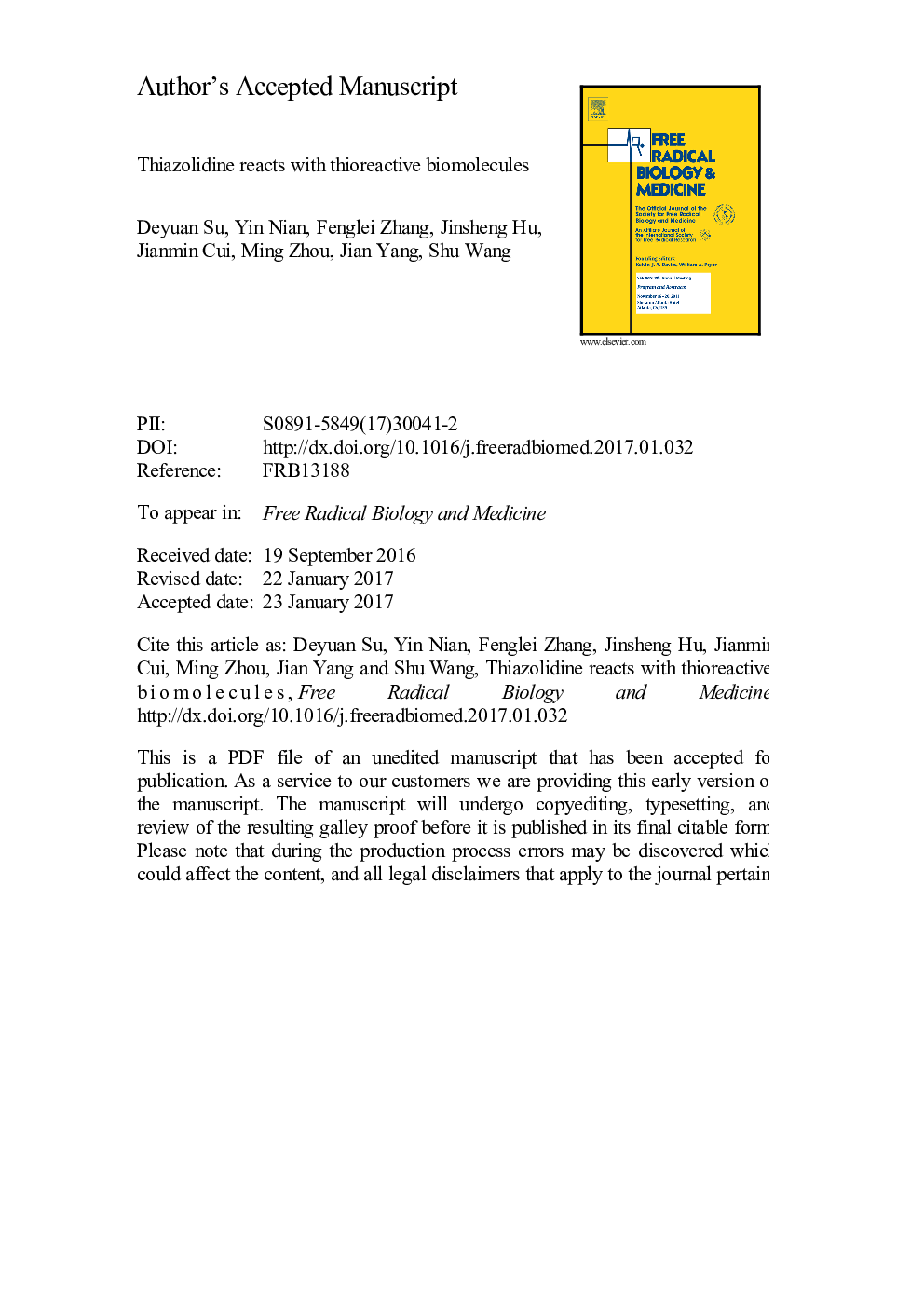| Article ID | Journal | Published Year | Pages | File Type |
|---|---|---|---|---|
| 5501970 | Free Radical Biology and Medicine | 2017 | 28 Pages |
Abstract
The thiazolidine ring is a biologically active chemical structure and is associated with many pharmacological activities. However, the biological molecules that can interact with the thiazolidine ring are not known. We show that thiazolidine causes sustained activation of the TRPA1 channel and chemically reacts with glutathione, and the chemical reactivity of thiazolidine ring is required for TRPA1 activation. Reducing agents reverse thiazolidine-induced TRPA1 activation, and mutagenesis studies show that nucleophilic cysteine residues in TRPA1 are critical, suggesting an activation mechanism involving thioreactive chemical reactions. In vivo studies show that thiazolidine induces acute pain and inflammation in mouse and these responses are specifically dependent on TRPA1. These results indicate that thiazolidine compounds can chemically react with biological molecules containing nucleophilic cysteines, thereby exerting biological activities.
Keywords
Related Topics
Life Sciences
Biochemistry, Genetics and Molecular Biology
Ageing
Authors
Deyuan Su, Yin Nian, Fenglei Zhang, Jinsheng Hu, Jianmin Cui, Ming Zhou, Jian Yang, Shu Wang,
